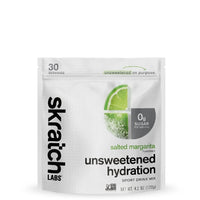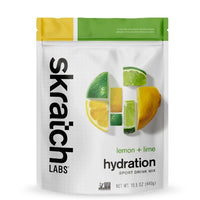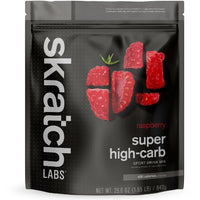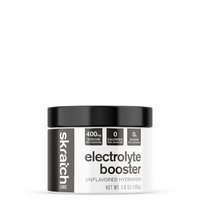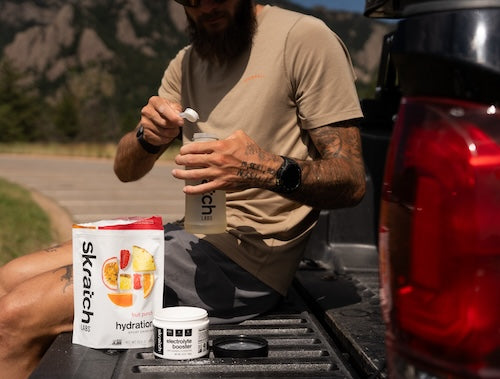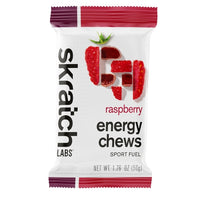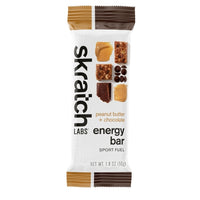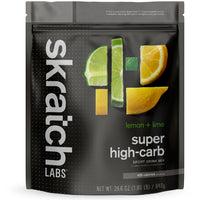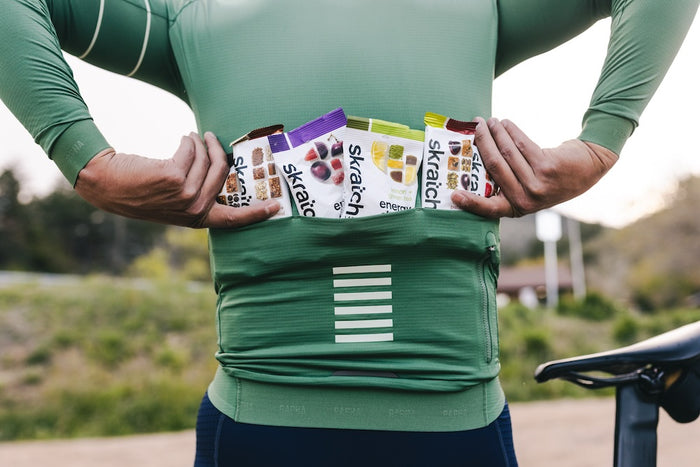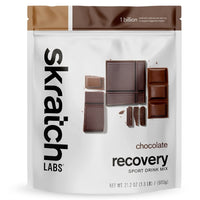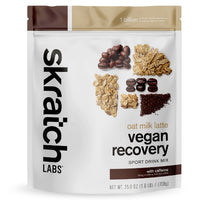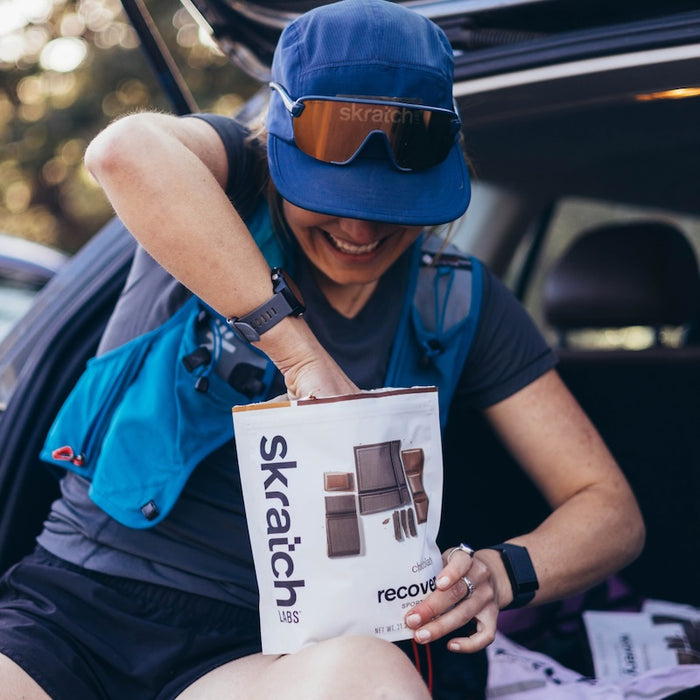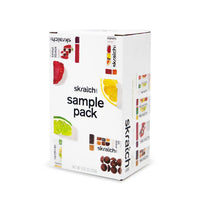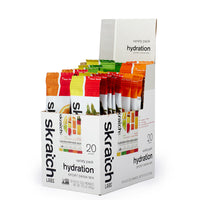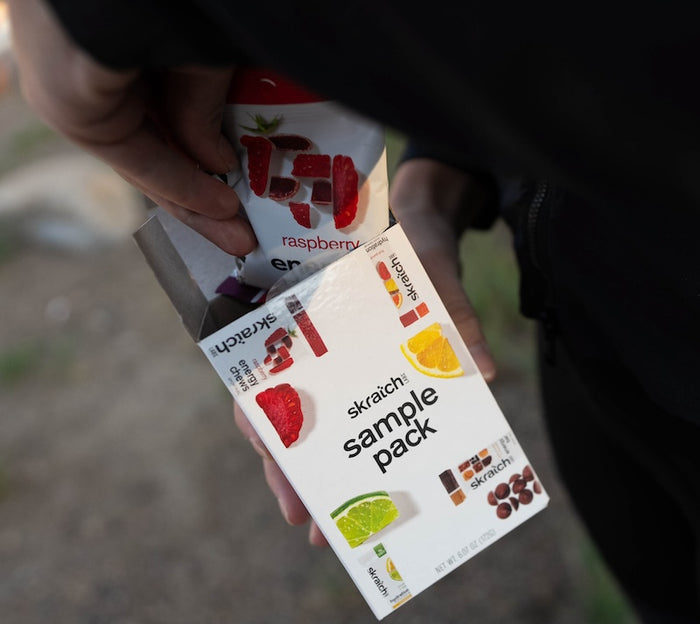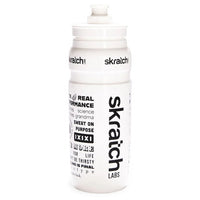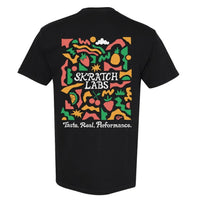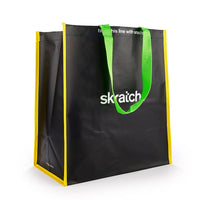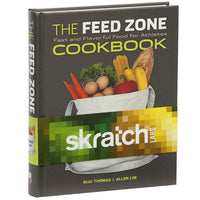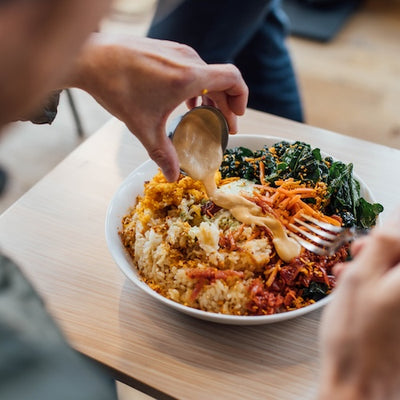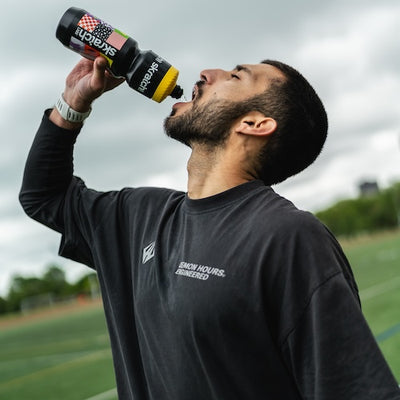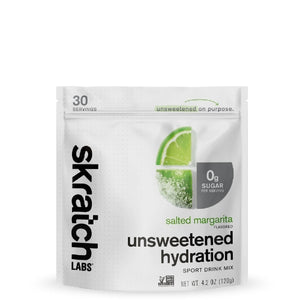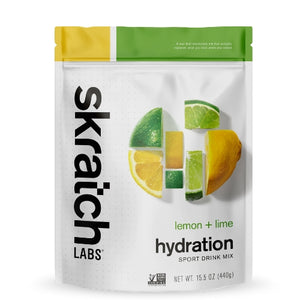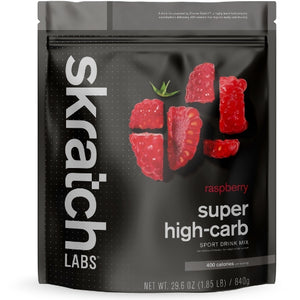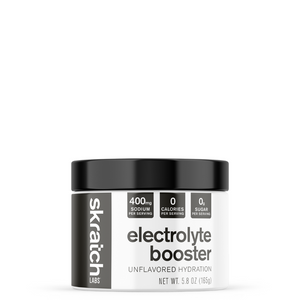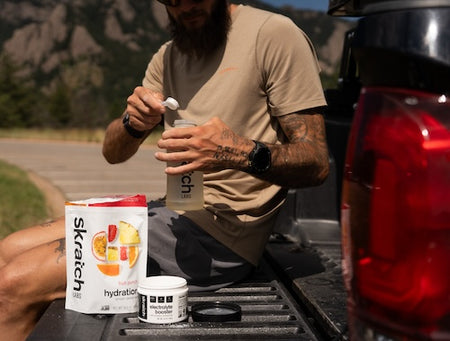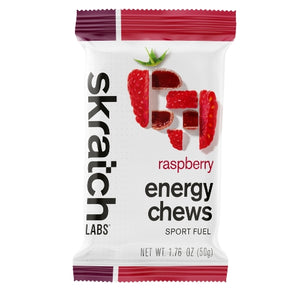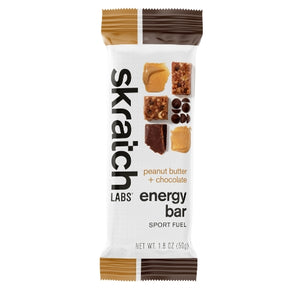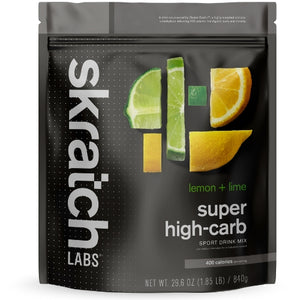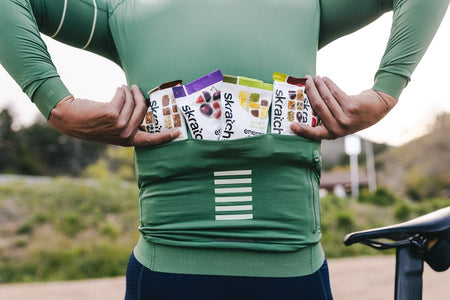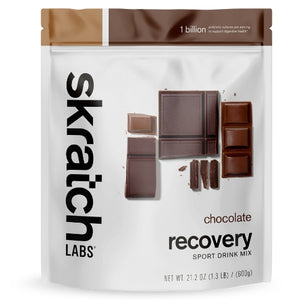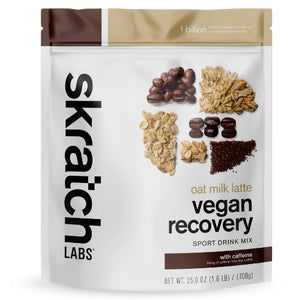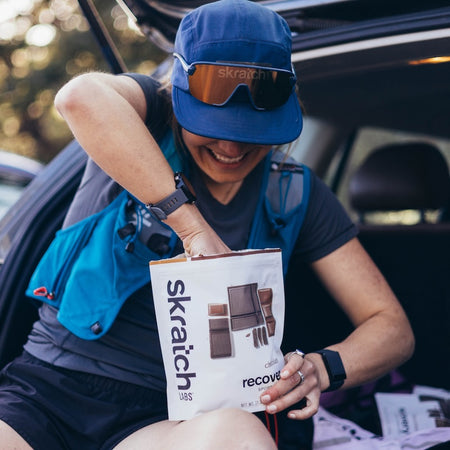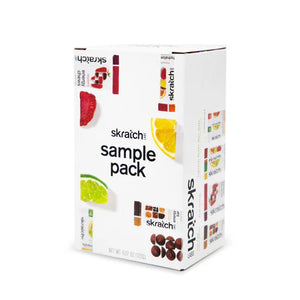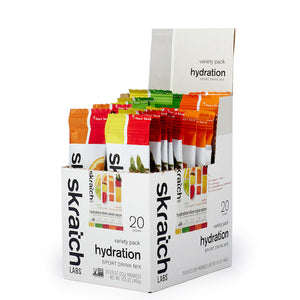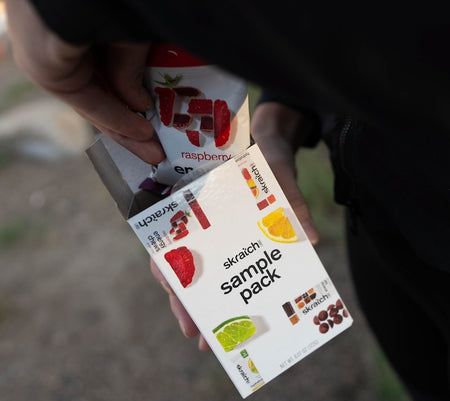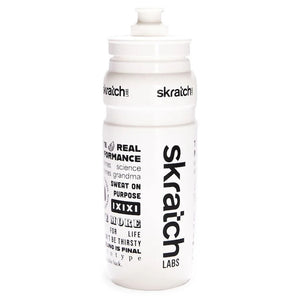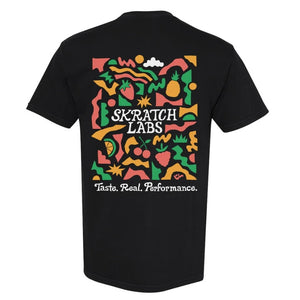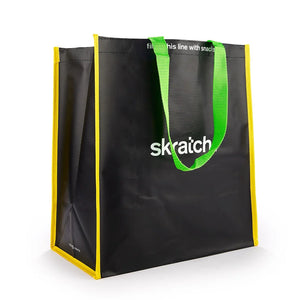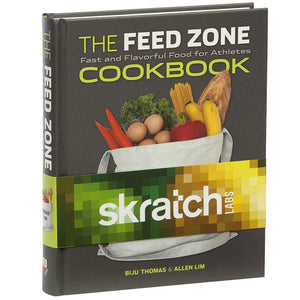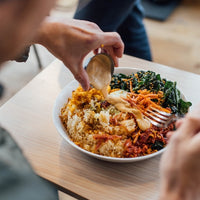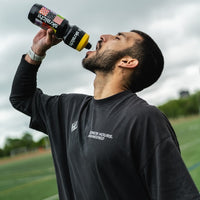Please read on and if you do not find what you are looking for reach out to [email protected]
For years, Skratch has preached fueling athletes with real food, like our famous rice cakes and delicious Energy Bars.
Why is that?
Because traditional fueling gels and high-calorie carbohydrate drinks are too concentrated or use carbohydrate sources that digest too fast for athletes to tolerate, causing gastrointestinal distress.
But we know athletes can’t always make, carry or eat real food. They want convenience and calories in a bottle that won’t make them sick. To that end, our founder, Dr. Allen Lim, developed a solution with a formula using Cluster Dextrin - an extraordinarily complex carbohydrate that is highly soluble but digests steadily like real food.
Cluster Dextrin is an amylopectin starch with highly branched segments that connect back to one another to form a cyclic shape similar to muscle glycogen. This similarity is a result of applying Branching Enzyme (the same enzyme responsible for glycogenesis) to waxy corn starch to make a highly branched cyclic dextrin (1). The net result is a carbohydrate that is extraordinarily soluble but still slow to digest (2). Much of this is explained by Cluster Dextrin’s large size. A single molecule contains between 60 to 70 glucose units, at an average molecular weight of 10,548 grams per mole, with a Dextrose Equivalent of 1.7 (3). In contrast, a long chain amylose starch like maltodextrin, which is the most common form of carbohydrate in gels and high-calorie drinks, only contains between 3 to 20 glucose units, at an average molecular weight of 2,000 grams per mole, with a Dextrose Equivalent of 8-10 (3).
Cluster Dextrin’s properties enabled us to make Super High-Carb Drink Mix– a drink mix with a viscosity close to water, that is energy dense, and steadily digested. It’s designed for athletes who push so hard that they can’t take in enough calories from real food to maintain their performance.One 500 ml serving provides 100 g of carbohydrate (92 grams from Cluster Dextrin + 8 grams from fructose) and 400 mg of sodium from sodium citrate, providing 400 Kcals at an osmolality of 150 mOsmol/kg (3). This is significantly lower than blood (280-290 mOsmol/kg), helping to maximize water transport by both osmosis and sodium-glucose co-transport. Given this extremely low osmolality, Super High-Carb Drink Mix is an extremely flexible fuel and hydration source which can be used at lower or higher concentrations depending on the workload and caloric need.
While there is existing literature showcasing incredible performance gains with Cluster Dextrin in both humans (4) and animals (5) as well as literature showing alleviation of gastro-intestinal distress (6), we wanted to prove it to ourselves before making Super High-Carb Drink Mix available to the public.
To that end, we worked for nearly two years with some of the world’s greatest athletes, including Olympic Gold Medalist Triathlete, Gwen Jorgensen, and the EF Education First Pro Cycling Team to prove that the science matched real world practice. The consensus from these athletes is that Super High-Carb Drink Mix is the best liquid carbohydrate source available.

Photos: Talbot Cox Media
FAQ
Is 400 calories in a serving the right amount for me?
Probably not, not unless you are exercising at an intensity where you are burning close to 1000 Calories per hour or are exercising for more than 3 hours. That said, 400 Calories is 400 Calories, so think of Super High-Carb as an easy way to carry a lot of Calories to meet whatever your needs are. Ultimately, we recommend that you try and replace about 1/2 the calories you burn per hour to maintain your blood sugar levels and to make sure you don't run out of carbohydrate in your muscle (glycogen). Depending upon your fitness and intensity, 400 Calories may or may not be enough for you. So just think of this as a convenient way to get what you need without upsetting your gut. Don't think of this as what you have to consume. Consider starting by testing 4-5 scoops in 16 oz of water and go from there.
We’ve also released a new 200-calorie packet that lets you try a smaller volume of calories without having to use half-scoops. So you can customize your fuel needs even more, wherever your training takes you.
Do I need a separate bottle of Sport Hydration Drink or Unsweetened Sport Hydration Drink Mix?
One serving of Super High-Carb provides the equivalent amount of hydration as one serving of Sport Drink Mix. That said, 1 bottle or about 1/2 liter may not be enough to replace your fluid losses from sweat. So if you do need more hydration beyond one bottle, then our Hydration Sport Mix still fits the bill. If you want to keep fuel and hydration seperate check out our Unsweetened Hydration Sport Mix as a way to hydration with minimal caloric energy.
Realize that optimal hydration and optimal fueling are not the same thing. We don't always lose calories in proportion to the fluid we lose. On hot days, you may not even need Super High-Carb if you are using our Hydration Sport Mix at a rate that matches your fluid losses, because you may lose so much fluid that a bottle with less calories gives you the same total number of calories. On cooler days, you may find that you're burning the same amount of energy but not sweating as much, so based on your calorie needs and lower fluid needs, a higher calorie Super High-Carb bottle is all that is needed. Think of Super High-Carb and our Hydration Sport and Unsweetened Sport Hydration as very different types of tools. It's not that one is better than the other. One is a big hammer without a lot of fluid. The other is a little hammer with a lot more fluid.
You can mix High-Carb with our other hydration mixes into one bottle but you’ll want to do some math and make sure you are getting an appropriate combination of carbs, sodium, and liquid to your needs and to avoid GI distress (too many carbs in too short of a period and you’ll be busting your gut…). This ratio can change depending on the weather, effort, and other factors, so test things in training and if you have questions, hit us up: [email protected]
How is this used?
This is a really flexible product in that you can lower the amount depending on weather, activity, etc.The directions to use listed on the bag are: Add 7 scoops to 8 fl oz of water. Shake vigorously. Add remaining 8-12 additional fl oz of water and shake again. For better mixing, let sit for 15 minutes before use.
If you’re using one of our new Super High-Carb 200-calorie packets, simply add one or two packets to 8 fl oz of water, depending on your fueling needs, then shake vigorously. Add remaining 8-12 additional fl oz of water and shake again.
How you use it all just depends on how many calories you need to take in and how much water you want to drink to get those calories.
Additionally, the athletes we work with like using the Super High-Carb in conjunction with our drink mix. Not because Super High-Carb doesn’t have the right amount of electrolytes for a 100 gram or 400 kcal serving, but because in the heat, they lose more water and sodium than they burn calories. If you used Super High-Carb to replace both your calories and your fluid/electrolyte loss in the heat, you’d end up consuming too many calories. That said, in the cold, where fluid needs are not as great, the athletes we work with found that they would use less of our sport hydration mix, because their fluid needs were lower, but they’d use the same amount of Super High-Carb since their energy output was still the same.
The combination you use will be weather and exercise intensity dependent. Hot weather, less Super High-Carb and more sport hydration. Cold weather, maybe a little more Super High-Carb and less sport hydration. Think of it as food when you don't have or can't chew food.

Max scoops per bottle?
For a 16 ounce bottle, the maximum number of scoops I would recommend is 7 scoops, or two of our 200-calorie packets. Said differently, I would not recommend more than 100 grams of total product in a 16 ounce bottle (and no more than 100 grams per hour). Most athletes we work with, only put 80 grams or about 6 scoops in a 16.9 oz bottle. 7 scoops or 100 grams is max, though I’ve heard of some folks putting anywhere from 10 to 14 scoops in (140 to 200 grams). Finally, note that as this powder settles, a scoop might weigh more than the 14 ish grams of one of our scoops. So always best to use a scale to calibrate how you scoop!
How much Super High-Carb can I consume per hour?
Absorption of Super High-Carb is very dependent on the athlete. In our experience, some athletes can only handle a maximum of 60 grams per hour of carbohydrate regardless of source and others can handle as much as 150 grams of carbohydrates.
There are an array of factors that can determine your absorption rate - most of my athletes sit comfortably between 45g -120g of mixed carbohydrates. Based on what is easier for you here is a good starting point - we usually start with 5 scoops per 20oz bottle (if you use a bottle per hour) or you can spread out 7 scoops over 1.5 hours if you are wanting to reduce the amount of bottles you are using (this may depend on the temperature you are training in if you need more water or less).
If you are experiencing GI distress, use less scoops. If you are tolerating and want to experiment (maybe for the longer race) you can add more scoops per hour to see if you can absorb more CHO for longer lasting performance and better energy. If you are mixing with the Sport Hydration mix make sure to count the carbs from that into your total carb math and what your personal needs can consume per hour.
Can I make this into a gel?
For a gel-like option you can use 1 scoop per every 1-1.5 ounces As a starting point.
3.5 scoops or 1 x 53g packet Super High-Carb Drink Mix = 200 calories and 190mg of sodium
7 scoops or 2 x 53g packets Super High-Carb Drink Mix = 400 calories and 380mg of sodiumYou can always start with less and add more as needed, based on your caloric and electrolyte needs.
You can mix High-Carb with our other hydration mixes into one bottle but you’ll want to do some math and make sure you are getting an appropriate combination of carbs, sodium, and liquid to your needs and to avoid GI distress (too many carbs in too short of a period and you’ll be busting your gut…). This ratio can change depending on the weather, effort, and other factors, so test things in training. Check this out for more info.
Feels expensive?
We weren’t swayed by the price of the ingredients when deciding to make this product. Our intent was simply to solve the problem.
We have found the carbohydrate we are using has more science backing it than standard maltodextrin or maltodextrin formulas. But we encourage folks to use whatever works best for them, so if you have something you like, we encourage you to use that. We also encourage folks to use real food when possible.
This was made for when you can't chew or access food.Food for thought in terms of $ per calorie. Super High-Carb is 40 dollars for 3200 calories. A 24 pack of gels from a different brand is regularly 60 bucks for 2400 calories. So maybe not an everyday training product but something for the arsenal on big event days.
And our 200-calorie packet is $3.25, so it allows you to try Super High-Carb before committing to an entire 840g bag.

If this is designed for big efforts how should we test it?
Always use and become comfortable with any sports nutrition you use in training before using it in a big event. While it is designed for really hard and long days, you can use less of it on easier days just to get familiar with the taste and get a feel for how it impacts performance. Ultimately, this drink was designed to replace food when it’s not possible to eat food. It’s not just for extraordinary days.
Is there a quantifiable benefit to Cluster Dextrin in Skratch vs. sugar? Your say Cluster Dextrin is slower absorbing, but does that matter if you're drinking one bottle over the course of an hour?
The quantifiable benefit of Cluster Dextrin vs. Sugar is the osmolality or molecular concentration of Cluster Dextrin vs. Sugar. Think of sugar or sucrose as two lego pieces stuck together into a little block and think of Cluster Dextrin as 60-100 lego pieces stuck together in a big block. The reason this structural difference matters is because the movement of water across the small intestine (i.e., the gut) is largely dictated by a process called osmosis. Osmosis is the movement of water from an area of low molecular concentration (i.e., low osmolality) to an area of high molecular concentration (i.e., high osmolality). It’s important to note that the osmolality or molecular concentration is based on the number of molecules or things or objects. It’s not determined by the mass or size of that thing. So a single cluster dextrin molecule made up of 60 to 100 glucose pieces (60 to 100 blue lego pieces) has the same molecular concentration or osmolality as a single sugar molecule made of 1 glucose piece and 1 fructose piece (a blue lego and a red lego). Thus cluster dextrin has 30 to 50 times the energy density of sugar at the same molecular concentration. The idea is that as we ingest cluster dextrin, each lego piece breaks off or digests at a rate that matches the gut's ability to absorb each lego piece. This effectively keeps the osmolality of the drink in the gut low allowing water to easily absorb across the gut by osmosis. If one were to drink a lot of calories using regular sugar vs. cluster dextrin, then all those little lego pieces from the sugar could cause gastrointestinal distress if there were too many molecules for the gut to absorb at one time. Effectively, too many molecules at once can cause water to flow into the gut which can cause bloating and in some cases diarrhea. Long story short, cluster dextrin is like a big bus carrying lots of people down a highway whereas sugar is a small car carrying just two people. If you need to ingest a lot of calories (i.e., move a lot of people down the road), cluster dextrin is safer and causes less gastro-intestinal congestion. But if you don’t need a lot of calories and need to prioritize water movement, then regular sugar works great. So it just depends on what you’re trying to optimize for. This is why we use simple sugar in our Sport Drink Mix but Cluster Dextrin in our High Carb Drink Mix.
What is the texture and taste like?
The viscosity is very close to plain water when fully dissolved. We think having something that is highly caloric that isn’t sticky, overly sweet, or thick is a great option for athletes.
If I heat it up to consume warm will that effect the structure and use of this? What about Freezing it?
The structure changes as soon as digestion begins and glucose molecules begin breaking off of it like passengers getting out of a car. But, because of its larger, more complex structure, the digestion is slower and more steady. So instead of 16 cars showing up at the gates of Disneyland and 4 people getting out of each car through one door at once to cause a huge line that puts pressure on the ticket line, HBCD gives us one bus with 64 people on it that lets each person off one at a time through one door. This reduces pressure at the ticket line as individual people or glucose sugars are let into the body (aka Disneyland).
It depends on the temperature. If you boil it, the structure may change. But, at normal bottle temp it will not change without the digestive enzymes amylase and glucosidase.We would suggest trying it heated (not boiled) and seeing how it compares for you when not heated, if it did begin to breakdown earlier heated it would worst-case sit in the stomach longer. - which for some people might be ok and for some might cause GI distress.
Super High-Carb can be frozen. The only way to damage the cluster dextrin/damage the bonds is with a lot of heat/ or the enzymes amylase and glucosidase.
I lost my Super High-Carb scoop!
1.7 TB which is 5 tsp per scoop. The scoop is a 25cc scooper. 5 teaspoons will get a more exact number than 1.5 or 2TB. Not quite a 1/8 cup scoop. Be sure fluffy the bag some before scooping as ingredients can seperate and settle.
References:
- Takata, H., Takaha, T., Nakamura, H., Fujii, K., OKADA, S., Takagi, M., &
Imanaka, T. (1996). Production and some properties of a dextrin with a narrow
size distribution by the cyclization reaction of branching enzyme. Journal of
Fermentation and Bioengineering, 84(2), 119–123. http://doi.org/10.1016/S0922-
338X(97)82539-1 - Lee, B.-H., Yan, L., Phillips, R. J., Reuhs, B. L., Jones, K., Rose, D. R., et al.
(2013). Enzyme-Synthesized Highly Branched Maltodextrins Have Slow Glucose
Generation at the Mucosal α-Glucosidase Level and Are Slowly Digestible In
Vivo. PloS One, 8(4), e59745. http://doi.org/10.1371/journal.pone.0059745 - Osmolality measures made using an EliTech Vapro® Vapor Pressure
Osmometer at the Applied Exercise Science Laboratory at the University of
Colorado at Boulder, 2020. - Shiraki, T., Kometani, T., Yoshitani, K., Takata, H., & Nomura, T. (2015).
Evaluation of Exercise Performance with the Intake of Highly Branched Cyclic
Dextrin in Athletes. Food Science and Technology Research, 21(3), 499–502.
http://doi.org/10.3136/fstr.21.499 - Takii, H., Ishihara, K., Kometani, T., Okada, S., & Fushiki, T. (2014).
Enhancement of Swimming Endurance in Mice by Highly Branched Cyclic
Dextrin. Bioscience, Biotechnology, and Biochemistry, 63(12), 2045–2052.
http://doi.org/10.1271/bbb.63.2045 - Takii, H., Kometani, T., Nishimura, T., Kuriki, T., & Fushiki, T. (2007). A Sports
Drink Based on Highly Branched Cyclic Dextrin Generates Few Gastrointestinal
Disorders in Untrained Men during Bicycle Exercise. Food Science and
Technology Research, 10(4), 428–431. http://doi.org/10.3136/fstr.10.428
